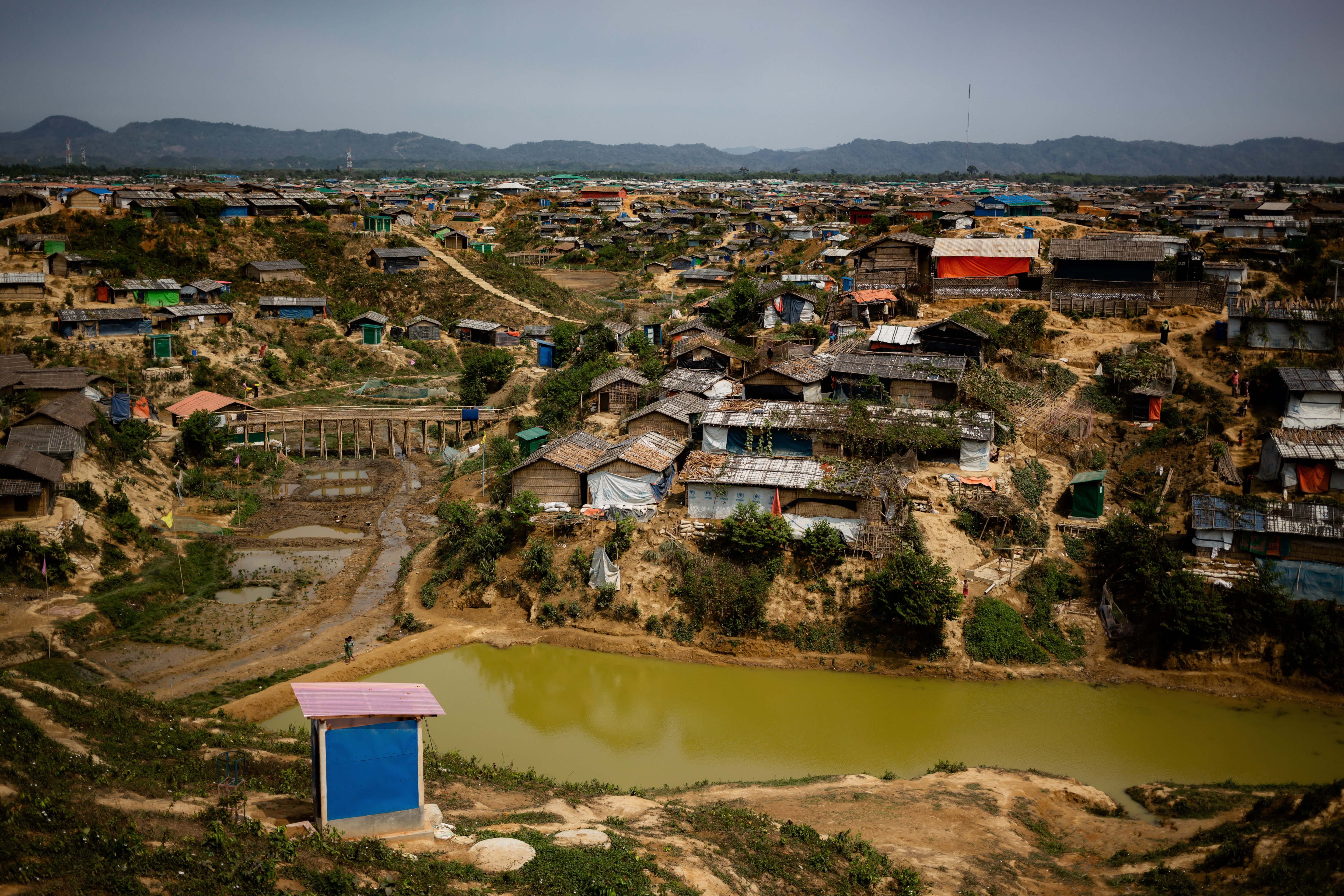Disease Surveillance Systems in Fragile Settings

Share this step
Our article on What Types of Surveillance Exist? discussed different systems, how they can be combined and how disease surveillance systems adapt once an outbreak is suspected or confirmed. The appropriate system to use depends on the situation, and in this article Anna Kuehne and Rosamund Southgate (Médecins Sans Frontières) outline surveillance systems in fragile and humanitarian settings such as conflict zones and refugee camps. A real-life case study concludes this step illustrating surveillance principles in practice in a humanitarian crisis setting.
What is different about surveillance in fragile settings?
Fragile states have been described as those ‘facing particularly severe development challenges such as weak institutional capacity, poor governance, political instability, and frequently ongoing violence or the legacy effects of past severe conflict’. Fragile settings often, though not always, encompass humanitarian crises spanning conflicts and natural disasters affecting the health, safety, security and wellbeing of large groups of people.
The objectives of surveillance in fragile settings are similar to routine surveillance in stable contexts in some respects, including to:
- Inform health priorities;
- Follow disease and mortality trends over time;
- Monitor key infectious diseases;
- Detect epidemics;
- Implement an early response;
- Evaluate actions taken/interventions implemented.
In fragile settings infectious disease outbreaks are much more common, and health and surveillance systems are often weaker than in stable contexts. Challenges for surveillance in areas of conflict include:
- Limited health facilities;
- Limited or no existing surveillance system, or poorly functioning existing systems;
- Limited availability of trained public health workforce;
- Limited communications networks (phone or internet);
- Limited or no access to diagnostic laboratory facilities;
- Potential threats to staff safety.
Despite these challenges, surveillance in fragile settings is an essential part of humanitarian response. Humanitarian responders often use the ‘Ten Priorities for Humanitarian Response’ as a rough guide for the first steps to be taken in humanitarian response (this was originally published in MSF’s ‘Refugee Health’ in 1997). As you would expect, this list includes shelter; water and sanitation; basic medical care; and nutrition and food distribution, in addition to public health surveillance.
What information is collected to detect outbreaks in fragile settings?
The information typically collected in surveillance systems in fragile settings is:
- Demography (population size and breakdown by age group and sex)
- Mortality (number of deaths in the population)
- Morbidity (number of cases of different diseases)
- Basic population needs
- Programme activities.
These indicators allow monitoring of population health and identification of potential health risks, however it is the monitoring of communicable diseases and deaths that are key for outbreak detection. Calculating disease incidence rates or mortality rates from surveillance data requires an estimate of population size and basic demographic characteristics (i.e. age and sex) as a denominator. This is sometimes established by populations counts, estimates from programme data, or mapping.
Diseases
Which diseases to include in communicable disease surveillance depends on context, endemicity (usual presence of a disease in a given population) and international and national reporting obligations. The diseases present in a population vary according to: season; availability of food and water; living arrangements; endemicity; and immunity of the population. A risk assessment needs to be done to decide which diseases to put under surveillance. Usually, malaria, watery diarrhoea, acute respiratory infections, malnutrition and measles are among the diseases included for surveillance, as they are major killers in fragile settings. If there is a specific outbreak ongoing, that disease will also be included in surveillance. Each disease needs a case definition (what signs and symptoms or diagnostic test is needed to be counted as a case) and a defined flow of data.
Deaths
While disease surveillance will alert us to specific outbreaks of diseases under surveillance, mortality surveillance is a more generic marker for population health. If timely mortality data are available, they can also serve as an early warning system for outbreaks not included in surveillance. There are different ways of collecting mortality data including:
- Health facility-based surveillance systems;
- Daily grave counts;
- Deaths registers of authorities, mosques or churches
- Directly asking the community about deaths (community-based surveillance).
Events
Information about unusual events related to human health or risks to human health can be collected through health facility-based or community-based surveillance (CBS) systems. For example, through community leaders being asked to notify unusual events. The events can be:
- Predefined – for example: ‘more than two acutely sick persons with similar symptoms in one community within one day’; or
- Undefined – report anything unusual in relation to health in the community.
Unusual events can potentially capture clusters or outbreaks of emerging and unexpected diseases not included in disease surveillance.
What are key sources of surveillance information?
In fragile settings, the focus on outbreak detection means we prioritise easy-to-set-up surveillance systems for key diseases, deaths and events. Health facilities and communities are key sources of information.
Health facilities
In stable settings, health facilities usually serve as primary sources of information. The same can be true for fragile contexts, however, in such settings health facilities might not be in existence, functioning or accessible to the population. Thus surveillance based on health facilities alone may not detect cases in a complete or timely enough way.
Communities
CBS can serve as an early warning system for infectious disease outbreaks. Working with existing community groups/ representatives/ members with some health training (such as traditional birth attendants or community health workers) can be very effective identifying key diseases, events or deaths. A commonly-used form of CBS involves volunteers going house-to-house in their community, on a weekly basis, to get information on cases of key diseases, recent deaths or unusual events. CBS may also be less structured, and be based on traditional health practitioners, religious leaders or women’s groups informing a surveillance focal point about events or deaths.
How is an outbreak surveillance system developed in fragile settings?
In some settings there might be pre-existing surveillance systems that are (semi-) functional and can be built upon. In settings where no surveillance system is in place, the initial priority is to establish an early warning component to detect outbreaks in a timely manner including:
- Health facility reporting on key diseases – including training on case definitions and establishing a reporting system;
- Recruiting and training community members – to undertake house-to-house data collection.
In order to detect outbreaks, the data collected must be collated and analysed, and personnel trained to promptly investigate concerning trends and specific notifications to see if action is needed. The final link in the chain is the teams and resources needed to respond to outbreaks once detected by the surveillance system.
To help standardise and speed up the set-up of surveillance systems in fragile settings, the WHO established its Early Warning, Alert and Response System’ (EWARS). EWARS is an easy-to-use framework that can be rapidly implemented to support disease surveillance, alert and response in emergencies. It provides a framework for how to set up and run disease outbreak detection in emergency settings, providing the tools needed, and aiming to work as an adjunct to national systems, re-integrating back into these once the emergency is over. Where there are no reliable internet or phone connections, the WHO ‘EWARS In A Box’ kit provides the electronic devices and connectivity needed to rapidly start a surveillance system from scratch.
In conclusion, in fragile settings, public health surveillance is key for the detection of outbreaks but is challenged by lack of infrastructure and staff, as well as insecurity. Information that is typically collected is: demography, number of deaths, number of cases of different diseases, basic population needs and programme activities. For outbreak detection, standardized information on diseases, deaths and unusual events is collected at health facility and, increasingly often, at community level by community-based surveillance.
Share this
Disease Outbreaks in Low and Middle Income Countries

Disease Outbreaks in Low and Middle Income Countries


Reach your personal and professional goals
Unlock access to hundreds of expert online courses and degrees from top universities and educators to gain accredited qualifications and professional CV-building certificates.
Join over 18 million learners to launch, switch or build upon your career, all at your own pace, across a wide range of topic areas.
Register to receive updates
-
Create an account to receive our newsletter, course recommendations and promotions.
Register for free







